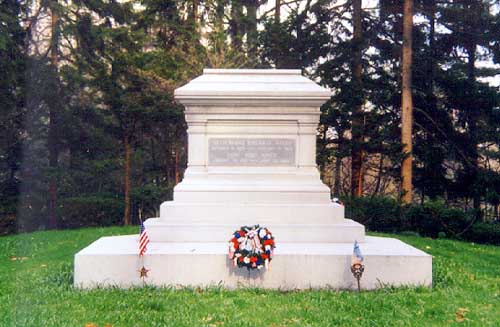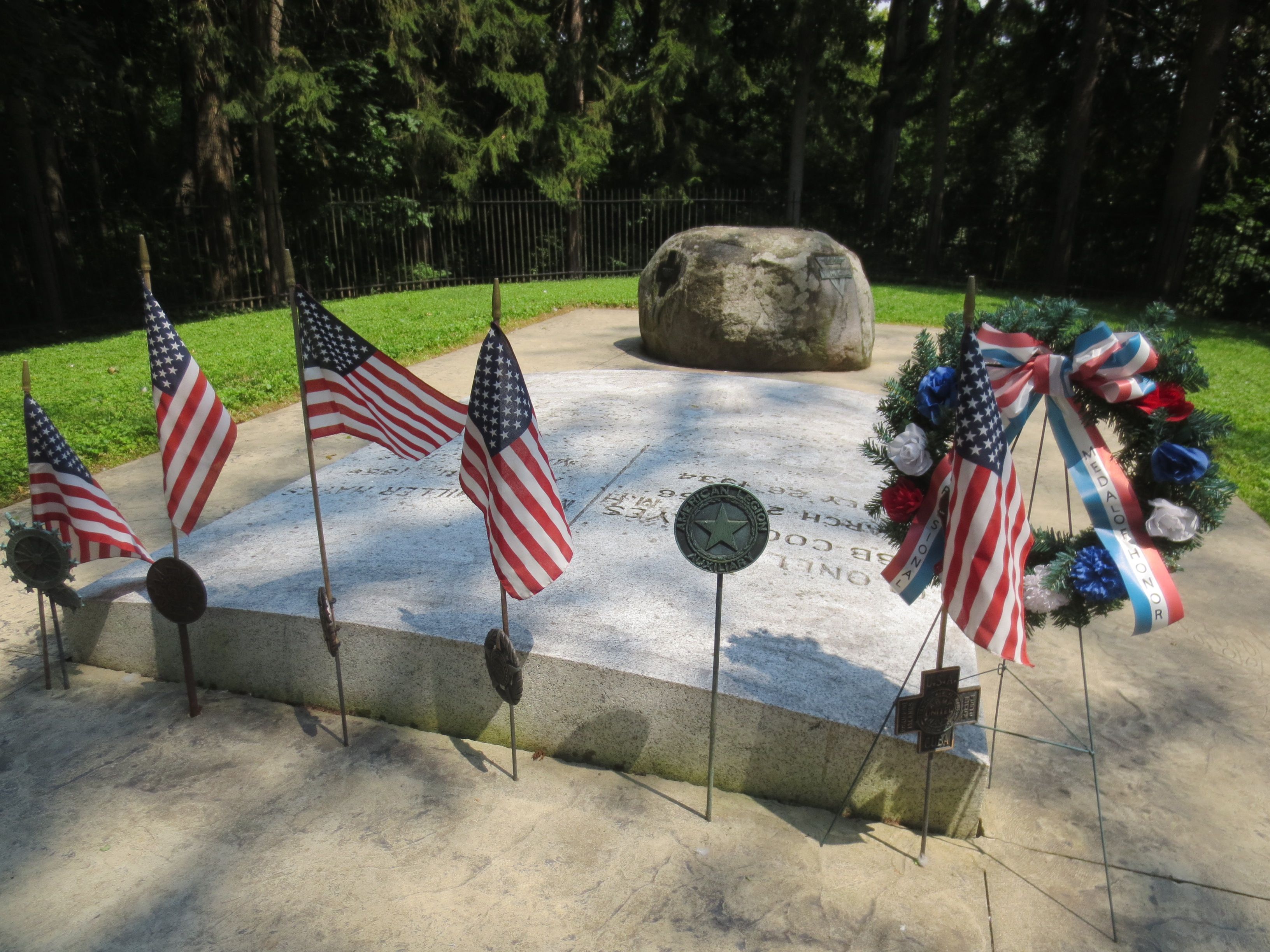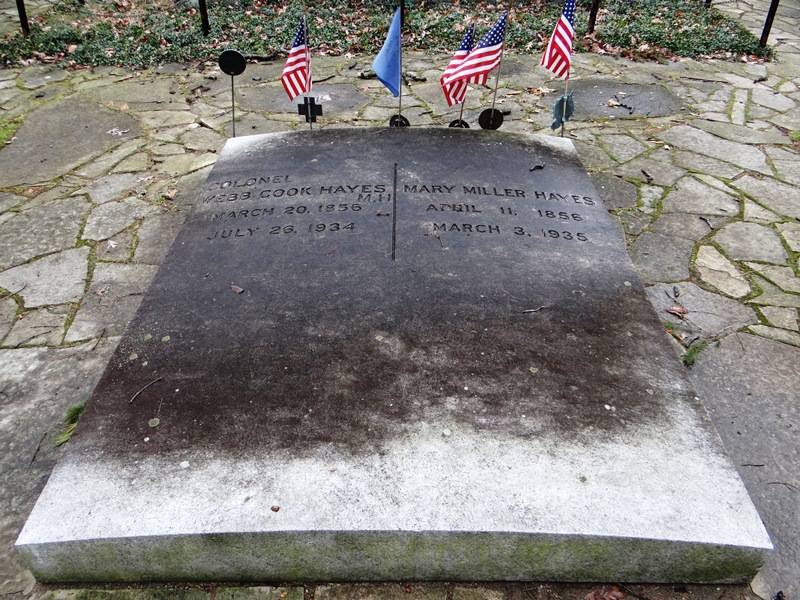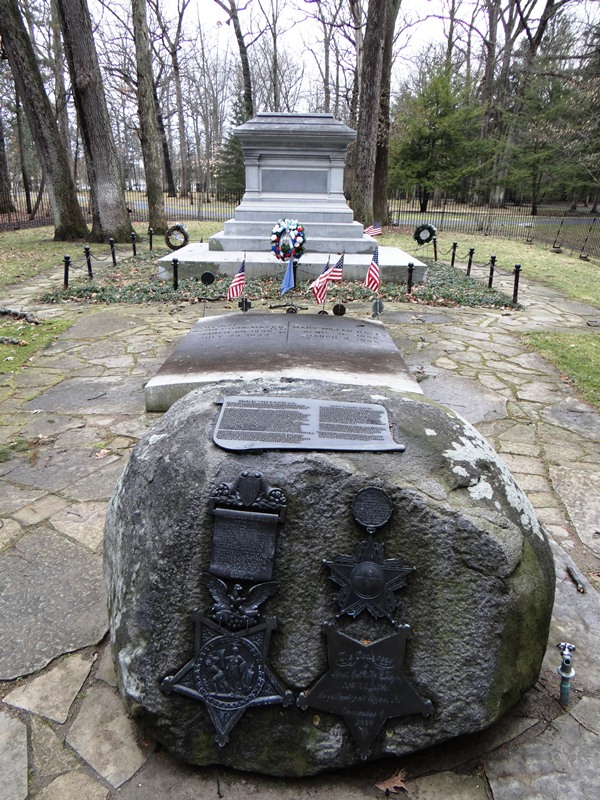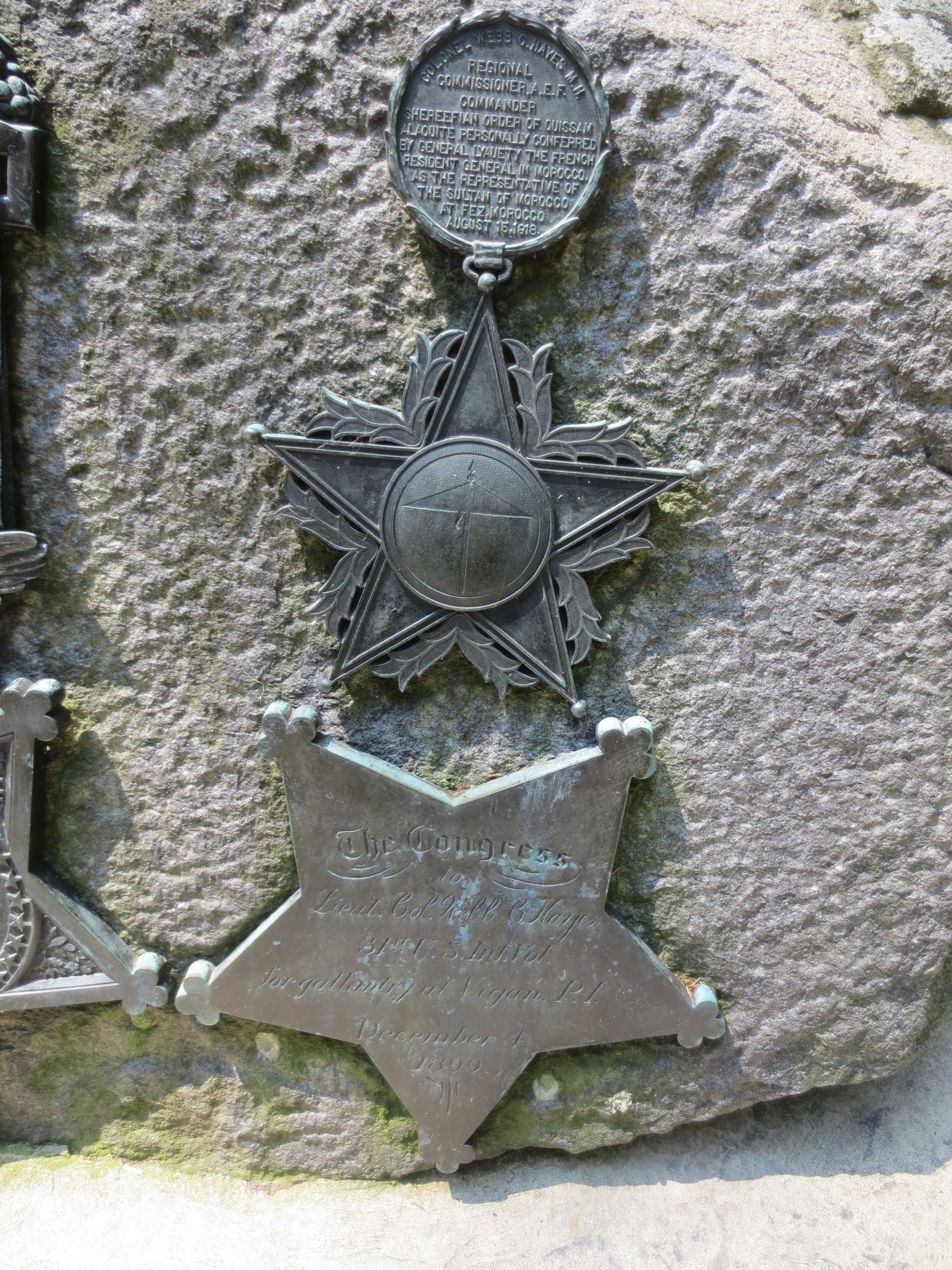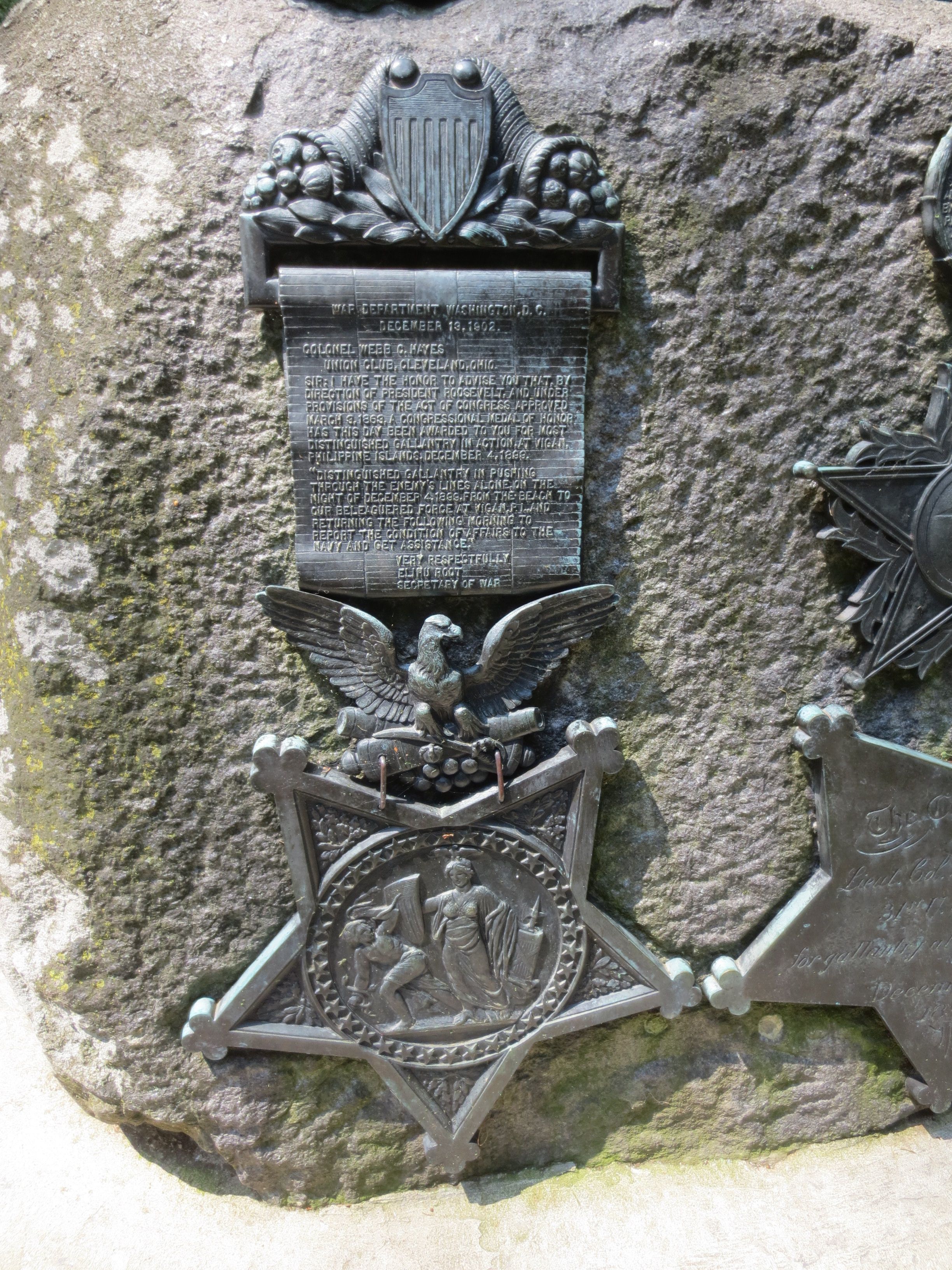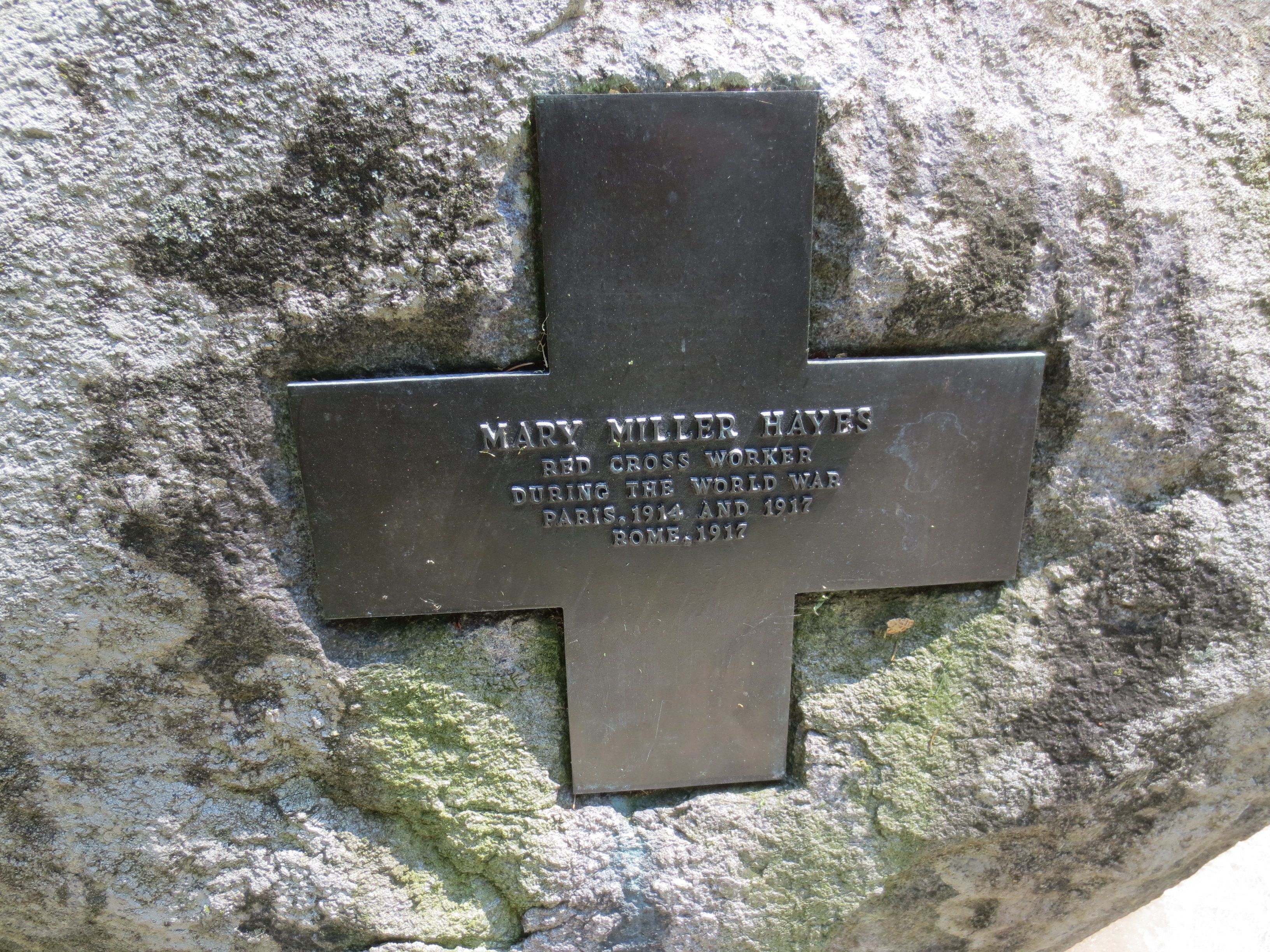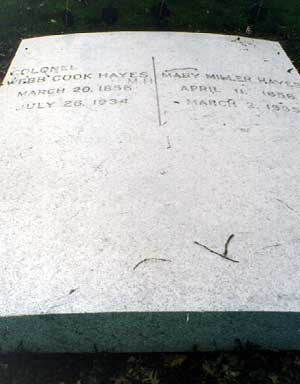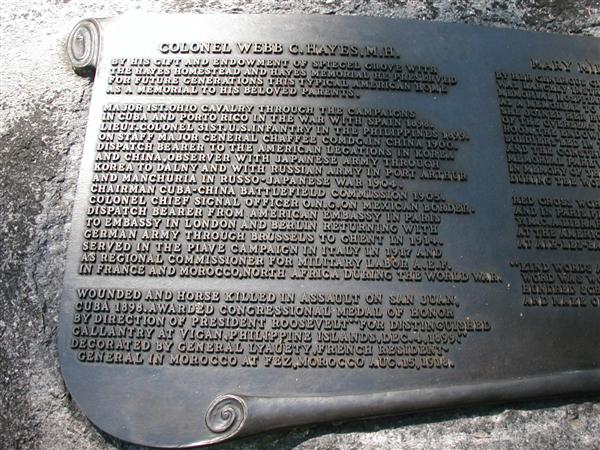Philippine Insurrection Medal of Honor Recipient. He was the second child of 19th United States President Rutherford Birchard Hayes and First Lady Lucy Ware Webb Hayes. During the Civil War his father fought first as an officer in the 23rd Ohio Volunteer Infantry, then as a Brigadier General of Volunteers. During winter months while his father's troops were encamped in winter quarters he was permitted to spend time with his father, and became of favorite of General Hayes' commander, Major General George Crook, who would become his godfather. Young Webb Hayes learned outdoors skills like hunting, fishing and basic survival skills during the encampments; skills that would benefit him later in life. After the war ended, and as his father was ascending in politics, Webb Hayes would attend Cornell University in Ithaca, New York, but left after two years to serve as his father's personal secretary after Rutherford Hayes was elected Ohio Governor for a second term in 1875. After his father then won the highly contested and controversial 1876 Presidential election, Webb Hayes continued to serve as personal secretary to him in Washington DC. While in the White House, he actually served as his father's closest advisor, and was the President's "eyes and ears" regarding political situations and dealings in Washington. When his father left office in 1881, Webb Hayes became a business executive in Cleveland, Ohio, and in 1887 co-founded the company that would eventually become the Union Carbide Corporation, a move that brought him great wealth. He served in the Ohio National Guard, and when the Spanish-American War began he was commissioned Major of the 1st Ohio Volunteer Cavalry. His unit got as far as Florida, and did not see any action during the war, but Major Hayes was assigned as an aide to Major General William Rufus Schafter, commander of the United States Fifth Army Corps. He was with the Corps in Cuba as it crossed the San Juan River, where he was wounded. Despite being injured he participated in the July 1, 1898 Battle of San Juan Hill, and later the land invasion and campaign that resulted in the capture of Puerto Rico island from Spain. He was mustered out of his Ohio Volunteer rank in October 1898, and was commissioned as Lieutenant Colonel in the 31st United States Volunteer Infantry regiment, whom he accompanied to the Philippine Islands. Only hours after he and his men arrived on Luzon Island there on December 4, 1898, he facilitated an assault that freed a besieged garrison of United States troops on Vigan Island by making a daring night time reconnaissance to ascertain the garrison's situation His bravery in the operations would see him awarded the Medal of Honor, with his citation reading "Pushed through the enemy's lines alone, during the night, from the beach to the beleaguered force at Vigan, and returned the following morning to report the condition of affairs to the Navy and secure assistance." When his Medal of Honor was awarded to him on December 17, 1902, he became the first Presidential child to receive the honor and to date only one other Presidential offspring was Brigadier General Theodore Roosevelt Jr. during World War II. He remained in the military, seeing service as part of the 1900 Chinese Relief Expedition as a Volunteer Aide-de-Camp on the staff of Major General Adna R. Chaffee during the Boxer Rebellion, serving as an official observer during the 1904 to 1906 Russo-Japanese War, and twice participating in United States Army operations against incursions along the United States-Mexico border. When World War I began, he served with French and Italian forces until the United States entered the war in 1917, after which he was commissioned as a colonel and serving in Italian Front with elements of the American Expeditionary Forces. He ended the war with the rank of Brigadier General. He was instrumental and the driving force in converting his parents' residence, "Spiegel Grove" in Fremont, Ohio, into a State Park, and in creation of the Rutherford B. Hayes Presidential Library, which was the first Presidential Library in existence, as a repository for President Hayes' papers. He also had his parent's remains moved there from Fremont's Oakwood Cemetery in 1915. He lived until 1934, passing away at age 78 in Marion, Ohio, and his remains were interred with his parents at Spiegel Grove State Park in Fremont.
Philippine Insurrection Medal of Honor Recipient. He was the second child of 19th United States President Rutherford Birchard Hayes and First Lady Lucy Ware Webb Hayes. During the Civil War his father fought first as an officer in the 23rd Ohio Volunteer Infantry, then as a Brigadier General of Volunteers. During winter months while his father's troops were encamped in winter quarters he was permitted to spend time with his father, and became of favorite of General Hayes' commander, Major General George Crook, who would become his godfather. Young Webb Hayes learned outdoors skills like hunting, fishing and basic survival skills during the encampments; skills that would benefit him later in life. After the war ended, and as his father was ascending in politics, Webb Hayes would attend Cornell University in Ithaca, New York, but left after two years to serve as his father's personal secretary after Rutherford Hayes was elected Ohio Governor for a second term in 1875. After his father then won the highly contested and controversial 1876 Presidential election, Webb Hayes continued to serve as personal secretary to him in Washington DC. While in the White House, he actually served as his father's closest advisor, and was the President's "eyes and ears" regarding political situations and dealings in Washington. When his father left office in 1881, Webb Hayes became a business executive in Cleveland, Ohio, and in 1887 co-founded the company that would eventually become the Union Carbide Corporation, a move that brought him great wealth. He served in the Ohio National Guard, and when the Spanish-American War began he was commissioned Major of the 1st Ohio Volunteer Cavalry. His unit got as far as Florida, and did not see any action during the war, but Major Hayes was assigned as an aide to Major General William Rufus Schafter, commander of the United States Fifth Army Corps. He was with the Corps in Cuba as it crossed the San Juan River, where he was wounded. Despite being injured he participated in the July 1, 1898 Battle of San Juan Hill, and later the land invasion and campaign that resulted in the capture of Puerto Rico island from Spain. He was mustered out of his Ohio Volunteer rank in October 1898, and was commissioned as Lieutenant Colonel in the 31st United States Volunteer Infantry regiment, whom he accompanied to the Philippine Islands. Only hours after he and his men arrived on Luzon Island there on December 4, 1898, he facilitated an assault that freed a besieged garrison of United States troops on Vigan Island by making a daring night time reconnaissance to ascertain the garrison's situation His bravery in the operations would see him awarded the Medal of Honor, with his citation reading "Pushed through the enemy's lines alone, during the night, from the beach to the beleaguered force at Vigan, and returned the following morning to report the condition of affairs to the Navy and secure assistance." When his Medal of Honor was awarded to him on December 17, 1902, he became the first Presidential child to receive the honor and to date only one other Presidential offspring was Brigadier General Theodore Roosevelt Jr. during World War II. He remained in the military, seeing service as part of the 1900 Chinese Relief Expedition as a Volunteer Aide-de-Camp on the staff of Major General Adna R. Chaffee during the Boxer Rebellion, serving as an official observer during the 1904 to 1906 Russo-Japanese War, and twice participating in United States Army operations against incursions along the United States-Mexico border. When World War I began, he served with French and Italian forces until the United States entered the war in 1917, after which he was commissioned as a colonel and serving in Italian Front with elements of the American Expeditionary Forces. He ended the war with the rank of Brigadier General. He was instrumental and the driving force in converting his parents' residence, "Spiegel Grove" in Fremont, Ohio, into a State Park, and in creation of the Rutherford B. Hayes Presidential Library, which was the first Presidential Library in existence, as a repository for President Hayes' papers. He also had his parent's remains moved there from Fremont's Oakwood Cemetery in 1915. He lived until 1934, passing away at age 78 in Marion, Ohio, and his remains were interred with his parents at Spiegel Grove State Park in Fremont.
Bio by: RPD2
Family Members
Advertisement
See more Hayes memorials in:
Explore more
Sponsored by Ancestry
Advertisement














